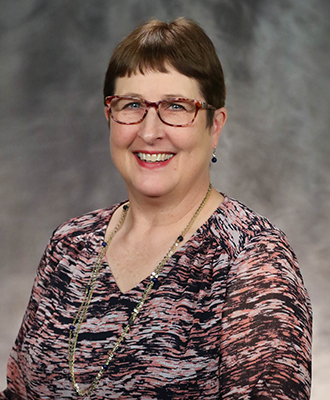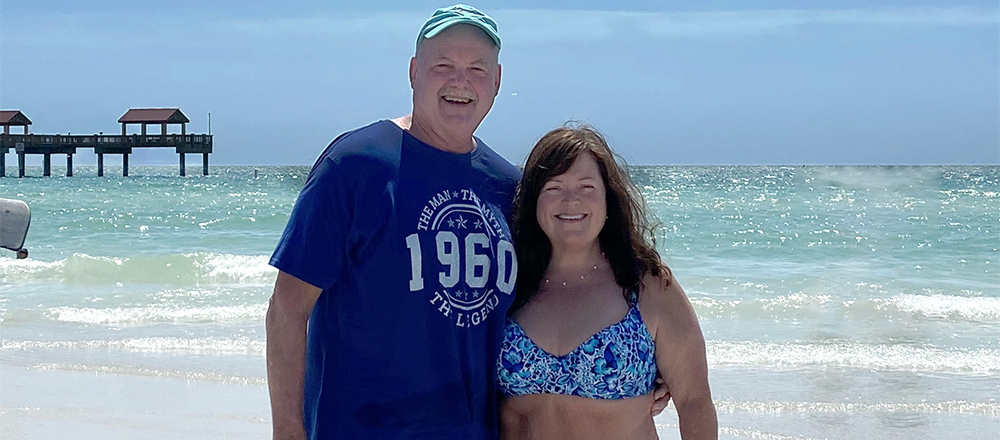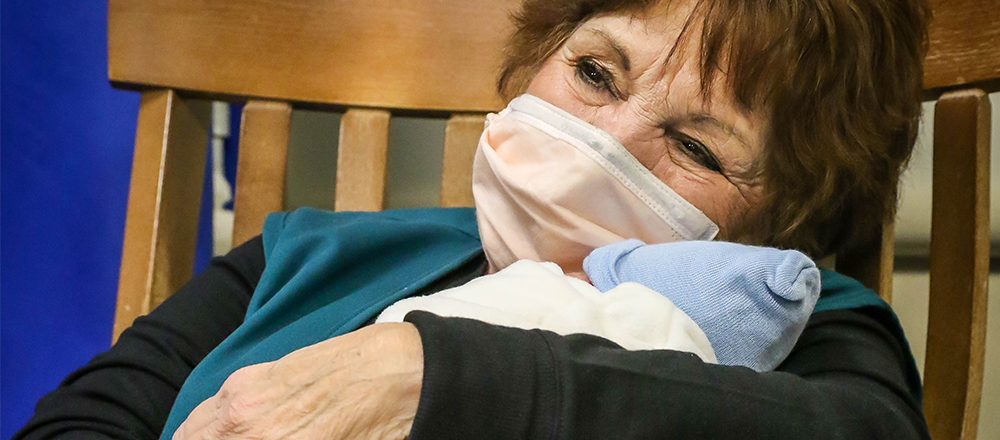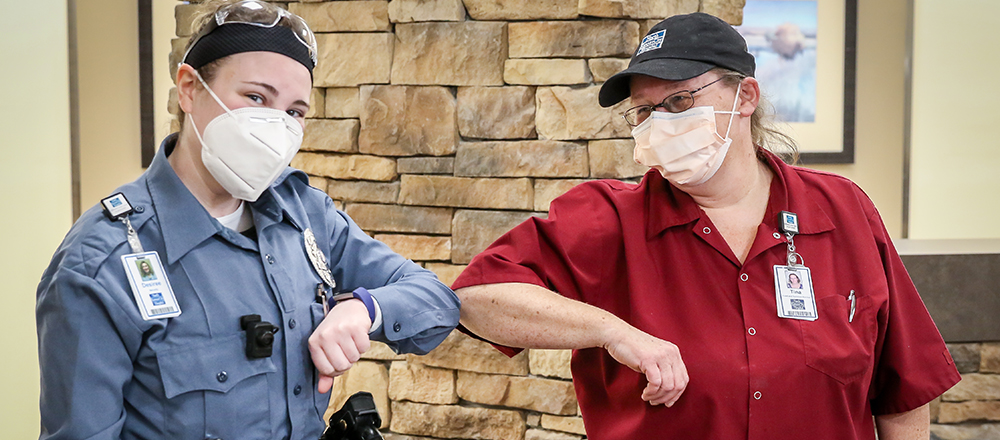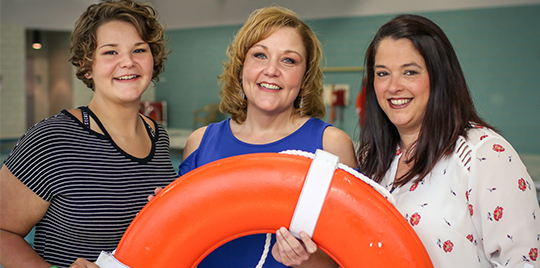
It was a typical summer day in late May at the Denton apartments near Parkville. Longtime friends and NKCH Nurses Bobbi Dickerson, BSN, RN, 10th Floor Pavilion, and Jessica Pruett, BSN, RN, CICU, were socializing pool side while Bobbi’s daughter, Roo, a third-year nursing student, enjoyed the water.
But, the relaxing scene quickly changed into an emergency and a race against time. Bobbi’s daughter, Roo, noticed a child lying at the bottom in 4 feet of water. She quickly dived below and surfaced cradling the girl’s lifeless body.
Roo’s scream for help caught her mom’s attention. Bobbi rushed over to take the child, who was now blue from lack of oxygen. With no pulse or respirations, Bobbi began CPR. Jessica joined her as the two worked feverishly to revive the three-year-old. “I worried that we were too late,” said Bobbi, who ironically was in the same CPR class with Jessica just weeks earlier.
Following multiple CPR attempts, the child started to breathe sporadically. The nurses continued to support her breathing with CPR. They were relieved when she vomited some of the water she ingested. Bobbi and Jessica could hear the water inside her when they moved her. After about eight minutes of CPR, she breathed on her own.
By the time emergency personnel transported her to the hospital, she was crying for her grandmother.
“I pray for that little girl every day,” said an emotional Bobbi. “People have told us, ‘Because of you a child gets to grow up.’ She also had an impact on us.”
For 20-year-old Roo, she hasn’t yet returned to the pool where she lives. “I can’t forget that image of her lying in the pool. I wonder what would have happened if I left the pool a different way?”
Adds Jessica, “Everything happened how it was supposed to that day. All three of us were meant to be there together.”
Remember – if a child goes missing, search the swimming pool area first.
Summer Pool Safety: Avoid Pool-Related Accidents
Did you know that drowning is the leading cause of unintentional death among young children ages 1-4? A fun summer day at the pool can bring upon unfortunate consequences if the necessary precautions are not taken.
Teach your child to swim
The ability to swim can save your child’s life. It is a necessary and lifesaving skill. Your child can enjoy fun swim lessons while learning how to stay afloat. Enroll your child in a class at NKCH.
Maintain active supervision
Never leave children unattended in the pool area. Stay at a close distance to the pool area, be alert, and be ready to respond to any emergencies. Always have an alert adult on duty. It is also important to keep a mobile phone nearby in order to call for help, if necessary.
Enforce pool rules
Make sure your child understands and follows safe pool behaviors and rules. These rules may include no running, no diving, using a buddy system, or staying away from drain covers. Running in the pool area can cause slips and lead to serious injuries.
Install fences, alarms and covers
Having these barriers can be crucial, mostly with small children. Install a non-climbable fence that surrounds the pool or spa on all sides. Consider investing in necessary alarms to maintain close supervision over the pool area.
Become CPR certified
Pool-related accidents happen, and we must have the proper training to respond to these emergencies. Most of the time, bystanders are the first responders to an aquatic-related accident and can save a drowning victim. Enroll in a CPR courses at NKCH. Classes start July 17.
Related Reading: Play It Safe This Summer
